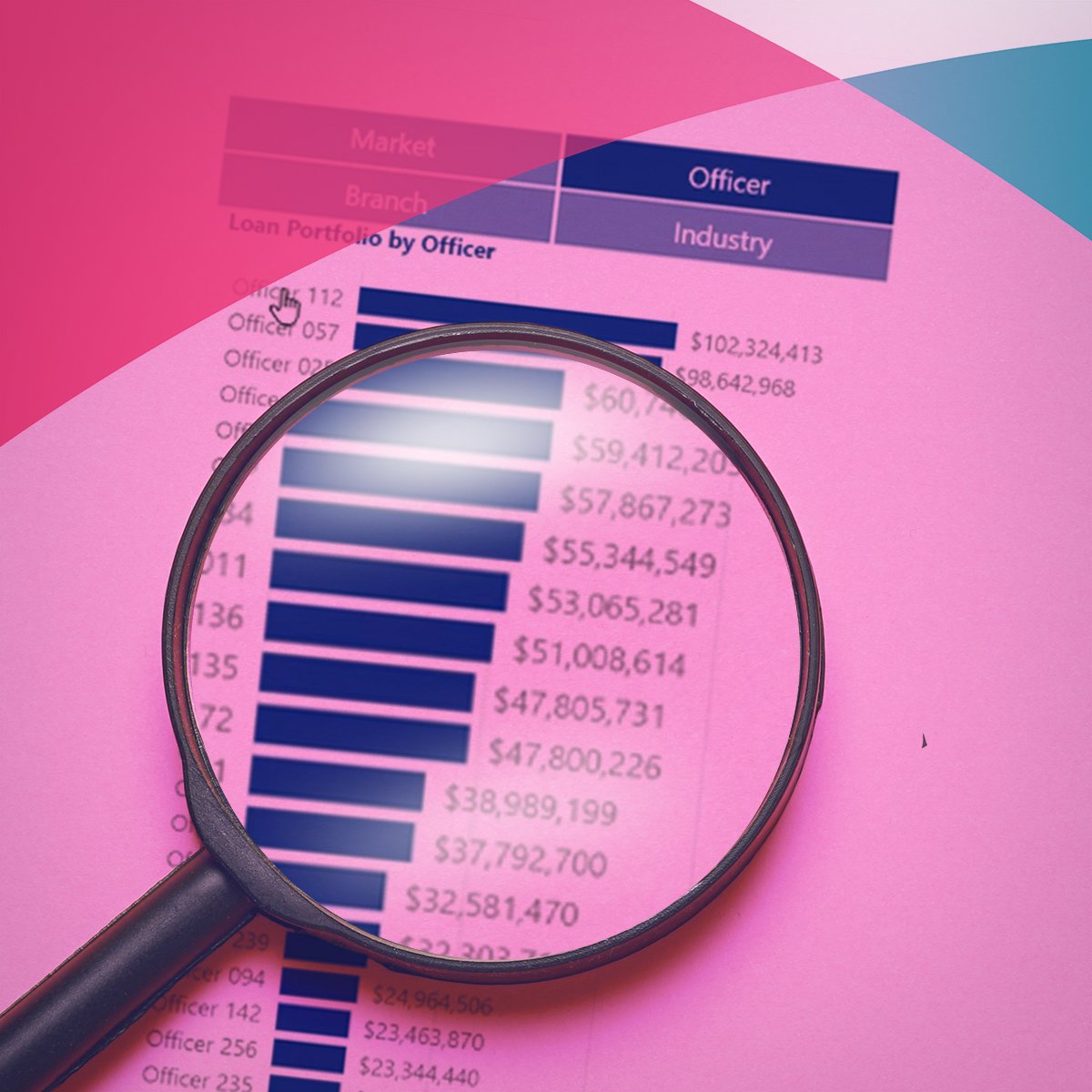The browser you are using is not supported. Please consider using a modern browser.
Article
Disrupting Your Data Culture: How Banks Can Win by Opening Access to Information
Banks can promote collaboration, enhance accountability and create a culture of opportunity when they present data in an actionable form.

We have a saying at KlariVis: Stop guessing and start knowing by bringing your data to life. Insights that lead financial institutions to greater growth and efficiency are attainable with an enterprise-wide data strategy. The process of extracting the valuable data banks already possess, harnessing it for analysis, and presenting in a clear, actionable format is truly transformative.
But data analysis can be highly revealing, and there is no question that allowing broad access to granular information ranging from what customers are buying to how individuals are performing can test a management team’s comfort levels. Undertaking a data enterprise strategy forces organizations to confront the need for transparency and give up some things that they may be used to—such as tightly controlling access to information.
In fact, we see again and again that banks can empower their teams when they stop thinking of data as the responsibility and possession of one person or a small department and reframe it as a corporate asset that provides insights everyone needs to do their jobs better. Financial institutions that break out of a traditional mindset can promote collaboration, enhance accountability, and create a culture of opportunity.
We all know the drawbacks of data silos, but understanding the problem and resolving it are two different things. If your sales team is using one customer relationship platform and your lenders are using another, you’ve got inefficiencies. Now, multiply that by multiple departments and products, and mix in a few people who just won’t let go of their Excel spreadsheets, and the result is a very muddy view of challenges and opportunities across your enterprise.
That can change when you bring data together in an interactive dashboard where everything can be accessed in an orderly way, and employees can serve themselves instead of having to submit data requests. Giving employees the ability to quickly gain access to the information they need to do their jobs brings efficiency and effectiveness to the forefront. Once everyone is looking at data in the same way, breakdowns in communication should no longer slow you down.
Still, it’s not uncommon for bank executives to hesitate before accepting increased data transparency. For example, they may worry about what will happen once lenders have a clear line of sight into productivity information and can see how their performance stacks up against that of their peers. But the alternative is unacceptable to most forward-looking financial executives. They understand that data is their prized asset, and they know that their ability to compete and thrive depends on putting customer knowledge and insights to work.
Getting comfortable with the shift to a data-centric strategy can take time—and it definitely requires high-level consensus. This support must include a budgetary commitment and a willingness to break down walls between different parts of the organization. You can’t foster collaborative efforts if marketing, lending, deposit-gathering, and finance are all doing their own thing.
Once executives begin to understand the “value gap” between what they are doing today and what they could be doing with enterprise-wide data transparency, resistance tends to fall away. And what comes out of it is something very powerful: It’s a culture of accountability.
Henry J. Evans, an author and business consultant who coined the term, says a culture of accountability is what “makes a good organization great and a great organization unstoppable.”
Linguistically, the root of the word accountability is the Latin computare, “to count.” The ability to quantify results and see them in black and white (or in color, in the case of our engaging interactive dashboards) is the first step toward accountability.
And accountability can power even a good organization to greater heights. In his best-selling book Winning with Accountability: The Secret Language of High-Performing Organizations, Evans put it this way: “When accountability is present, people keep their eyes on a very clear prize. They know what they are working toward and how they are going to get there. Accountability gives people and organizations a sense of purpose.”
Nobody can dispute the desirability of knowing your goals and understanding what it will take to reach them. But it’s important to come to terms with the emotional component of making change. Becoming data-centric forces many banks to break free from their accustomed ways of doing things.
One of the key cultural changes organizations must make is to stop thinking of data as something that must be closely held by a few people and instead recognize that sharing information and insights is a powerful way to unlock potential. Enterprise-wide access to an interactive dashboard equips individuals and teams to make informed decisions and participate in driving the organization’s growth.
It’s a truism in banking that tone from the top is vital, and that is absolutely true when moving to an enterprise data strategy. It has to be embraced by the C-Suite and baked into the organization’s DNA.
In data collection, it’s very common for the operations team to make decisions on which pieces of information will be captured. But the real experts on which information will be useful are the business leaders. It’s not simply that they must be brought into the conversion and implementation process early — they must lead the conversation, because they are best positioned to know how to measure success. During COVID, for example, we saw instances where an operational team, rushing to get their Paycheck Protection Program up and running, used Excel spreadsheets to capture information while booking loans. Expedience won out over more sophisticated tools that could have enhanced the relationship through cross-selling. The “just do it” mentality came at a cost, because there was no way to capitalize on the goodwill generated by great execution of PPP lending.
Once organizations move past their worries, the potential for positive change is tremendous.
- The transparency of an enterprise-wide data solution paves the path for coaching. It’s no longer necessary to wait for mid-year reviews before providing feedback and new direction.
- Through regular coaching, a commitment to continuous improvement starts to become embedded in the culture.
- Internal communication also improves once everyone is seeing the same data in the same way. With greater consensus around what’s important, discussions can focus on meaningful impacts.
- Guesswork is eliminated. Strategic decisions can be made based on facts, not on gut instinct.
Breaking out of their antiquated, fragmented, and siloed data infrastructures has been a known business imperative for financial institutions for decades. Embracing the power of enterprise-wide data analytics is a game-changer for community financial institutions. As our clients tell us, an approach does far more than connect data to make it actionable. It also promotes curiosity and uncovers new ways to utilize information.
Yes, there will be adjustments along the way. But financial institutions are very capable of navigating the path to becoming data-centric organizations with a culture of accountability, which opens the doorway to a culture of opportunity. And the adjustments are nothing compared to the cost of failure to leverage a financial institutions’ most precious asset—its vast storehouses of data.


